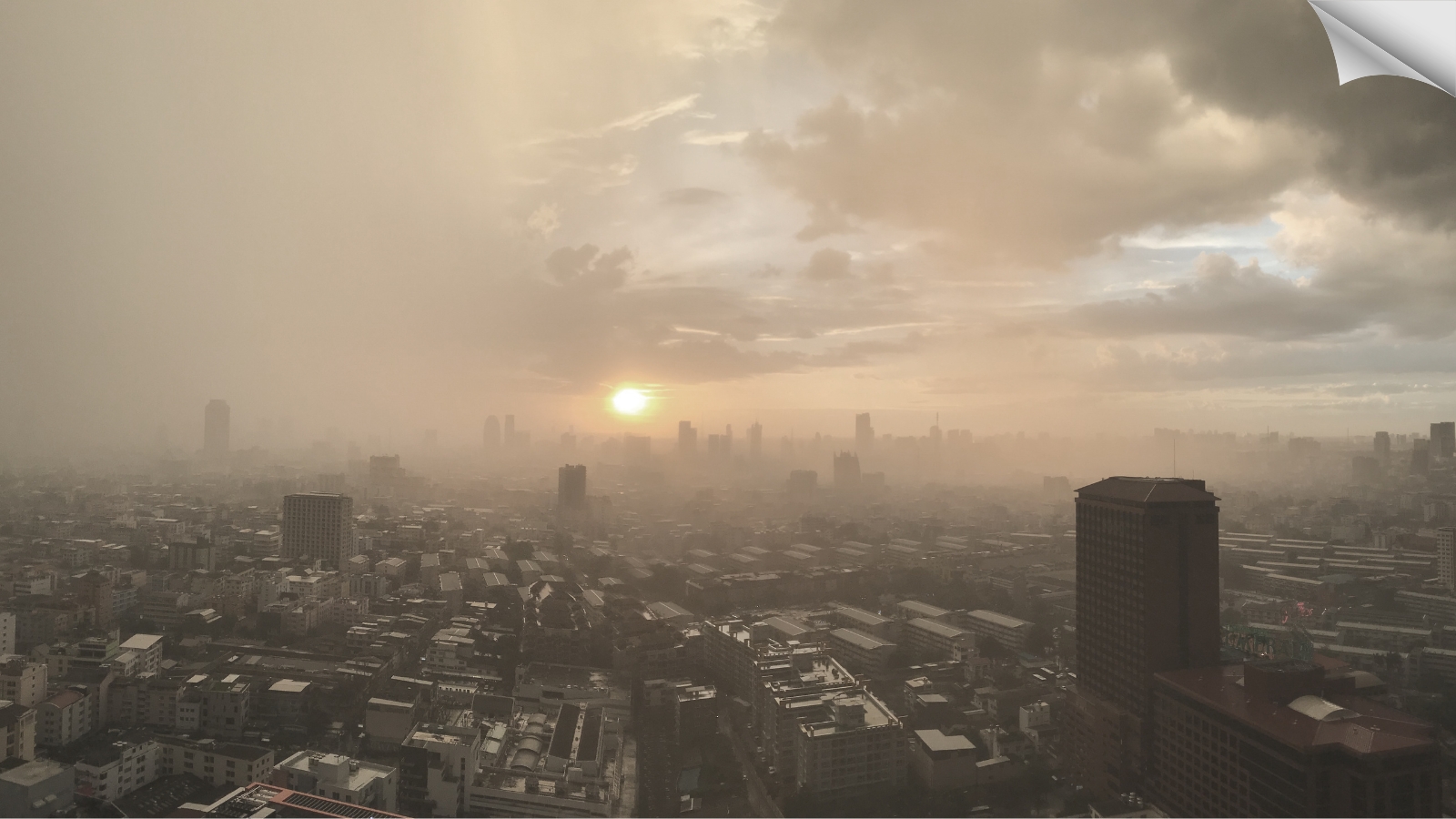Dangerous Intersection: Air Pollution and the Climate
This post was last updated on August 29th, 2023

Life on Earth is governed by natural cycles. Evaporation, condensation and precipitation refresh life-giving water sources. Photosynthesis transforms carbon dioxide into essential oxygen. The planet spins on its axis, cycling through seasons as it traces an ancient elliptical path around the sun.
Since the dawn of the industrial revolution, there have been man-made cycles at work on our planet too, cycles of damage and destruction. Increasingly, scientific inquiry is highlighting the inherent dangers of one such cycle, the interplay between air pollution and changes in the climate.
As research accumulates, our understanding deepens. Until recently, it was widely believed that carbon emissions are the sole catalyst for climate change. But several new studies demonstrate that the air pollution-climate dialectic is far more complex, a tangle of observable effects and unintended consequences.
Hamza Mbareche is among the legions of scientists who are analyzing these phenomena. As a postdoctoral researcher of airborne microorganisms, the microbiome, molecular biology, genomics and bioinformatics, he has studied the dangers of airborne particulates and toxins intensely, at academic laboratories and corporate facilities in Ontario, Canada. He is also the founder of Toronto-based Hamza Mbareche Consulting.
To illustrate an example of a previously-unknown man-made cycle, he points to a recent study by scientists at the Singapore Centre for Environmental Life Sciences Engineering at Nanyang Technological University. The research team measured microorganisms up to 3,500 meters from the Earth’s surface, and examined how fungi and bacteria grow, change, interact and move through the lower atmosphere. They found that increases in atmospheric temperature were changing the microbiome.
The study was published in the Proceedings of the National Academy of Sciences in 2022. According to a review of the findings by Science Daily, the scientists discovered: “As the temperature of the air changes, the species found and the ratio of bacteria to fungi change significantly. These findings suggest that the currently observed increase in global temperature will have an impact on the atmospheric microbial ecosystem, as well as planetary terrestrial and aquatic ecosystems.”
Team scientist Stephan C. Schuster noted: “If the composition of the air microbiome changes globally, it may affect human health, exacerbating respiratory syndromes in susceptible patients, or it could affect the yield of agricultural crops, which then threatens our food security. Natural processes that have worked for thousands of years such as carbon cycling on this planet may also be changed.”
“In this case we observe warming effects literally changing the balance and composition of microorganisms in the air,” explains Canadian scientist Hamza Mbareche. “Meanwhile, atmospheric pollutants are having sometimes unpredictable impacts on temperatures worldwide. Some types of pollution are warming the planet, while other particulates have cooling effects. The one constant is that the impacts are destabilizing to natural cycles and systems.”
For example, man-made compounds in the air such as sulfate aerosols, nitrates and airborne microplastics have the effect of deflecting solar radiation back to space, serving as a vast atmospheric umbrella that shades regions where such particulates appear in high concentrations. Ironically, when efforts are made by industrial countries to reduce emissions, the absence of these toxic mists triggers further warming on the surface. This phenomenon has been measured in areas of China, and it creates new health hazards for populations.
Writing on Columbia University’s Climate School State of the Planet site, science journalist Anuradha Varanasi explains the cycle this way: “Warmer temperatures ramp up reactions between nitrogen oxides and volatile organic compounds that get trapped in the lower atmosphere. Researchers observed that getting rid of aerosols or fine particulate matter is another reason why Chinese cities are experiencing a spike in ozone pollution.”
It doesn’t take much to alter cycles and create imbalances. Hamza Mbareche explains that particulate matter as small as 2.5 microns or less in diameter can shift long-established weather patterns, including altering precipitation levels, redirecting monsoon circulations and triggering lengthy droughts.
“Because Earth’s key life systems have existed for billions of years, we sometimes assume these systems are incredibly robust, even invulnerable.,” says Mbareche. “Although there is a remarkable resilience, there is also a fragility to the natural world, a finely calibrated balance that may be upended by the cascades of atmospheric changes our industrial economies create.”
Recommended For You
Getting Logistics Right Is Key to Business Success
Most Inside
Most Inside offers high-quality recommendations and valuable updates to enhance all aspects of your life, providing premium guidance and enriching experiences.




